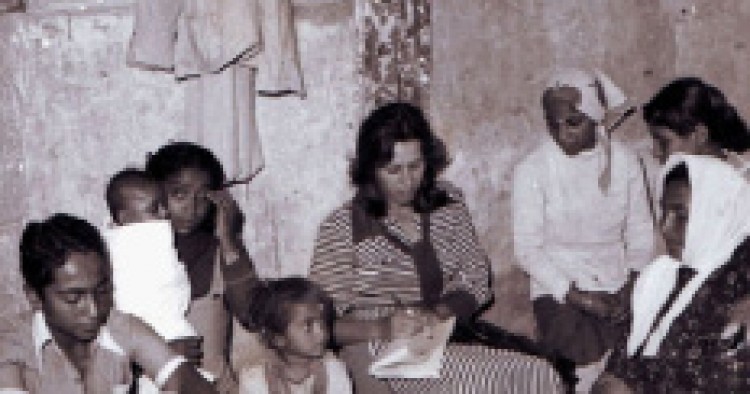Originally posted July 2010
I became a fashion designer because I wanted to change people’s view of our Arab heritage. Traditional Arab dresses are usually regarded as outdated and unfashionable garments which should be replaced with more modern-styled and practical clothes. I have decided, therefore, to bring traditional dresses back to the fashion scene by breathing new life into them. I have kept the original cut but changed the fabrics and colors. In so doing, I feel like blending the whole Arab world in my dresses. Before embarking on my designs, I did a lot of museum research and read a number of books on traditional Arab fashion. My collections are the outcome of the inspiration I have drawn from those sources.
Although I began my professional life as a painter, fashion design was a natural step forward, rather than a totally new direction in my career. As a child, I used to sit beside my mother, observing her sew dresses and then trying to make dresses for my dolls. My Iraqi roots — nostalgia and deep affection for the country — also have been a source of inspiration.
My career began 25 years ago. I felt that Arab women had developed a mediocre taste in fashion and clothing. They used to wear either Western clothes that didn’t really fit Arab women’s figures or lifestyle, or traditional dresses that were outdated and impractical. This realization led me to focus my professional mission on designing new fashion lines that could highlight traditional Arab art and modern refinement.
Surely, being a woman has made my journey a bit more difficult than if I were a man. For instance, it was not easy accessing remote villages, where I conducted my research and where fashion had remained static compared to the cities. I used to journey through small cities and villages, interacting with locals in an attempt to understand the story behind each culture, art, and design. For generations, women have created a heritage of untold value, not only for the Arab people, but for all mankind — a mirror of history and an outlook on life. Every woman used to embroider for herself or for her sister or daughter. I now have a collection of 5,000 pieces of old silver Arabic jewelry and over 300 traditional Arab garments. I believe authenticity is the key to our culture and world. Much of our art and design changed during the Ottoman period. Since the collapse of the Ottoman Empire, they have changed yet again.
I have faced tough competition from established Arab male designers. However, I have found it advantageous that Arab culture is rather conservative and that women would prefer to be dressed by other women, not men. The journey remains difficult for female designers. The ability to pursue their careers is usually determined by the support they can obtain from their immediate families. I was fortunate in that my husband was very supportive. His help in tending to our children’s needs when I was busy in my work and his faith in my talent were instrumental to my success.
I consider myself a pioneer in this field. I have managed to build a reputation as a female designer. I have worked for the luxury fashion house Yves Saint Laurent, as well as on my own label of fashion and jewelry, integrating Arabic art with the best of contemporary haute couture. My body of creative work includes the design of five costumes for Claudia Cardinale in the film The Pink Panther.
The fashion design market in the Arab world is now full of new talents, most of whom are Lebanese. However, because each of us has a distinctive style, we do not necessarily compete for the same market segment.
Currently, I am based in Jordan. My main challenge there is protecting my designs from copyright infringement. I find comfort in the realization that the copying of my designs is a sign of their artistic merit and potential commercial value. This motivates me to be even more productive. The broader challenge has been to change Arab women’s perception of our traditional clothing heritage. Usually, traditional dresses are looked down upon — seen as representing an archaic style reserved for old photos of grandmothers and great-great-grandmothers or rural women in remote villages. I believe that I have helped to change this perception by showing Arab women how traditional dresses can be trendy and suitable for important occasions such as weddings.
Our cultural heritage can unite all Arab populations. Man-made borders can vanish through art.
The Middle East Institute (MEI) is an independent, non-partisan, non-for-profit, educational organization. It does not engage in advocacy and its scholars’ opinions are their own. MEI welcomes financial donations, but retains sole editorial control over its work and its publications reflect only the authors’ views. For a listing of MEI donors, please click here.












